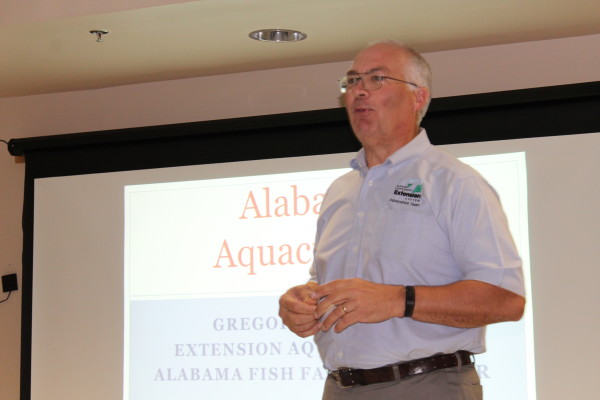Whitis discusses catfish industry with Demopolis Rotary

Greg Whitis had a lot to say about catfish farming in west Alabama, but his most striking comments concerned the importation of catfish from Vietnam.
Whitis, aquatic specialist with the Alabama Fish Farming Center in Greensboro, spoke to the Demopolis Rotary Club Wednesday on the current status of the catfish industry in Alabama.
The cheaper, thicker fish from Southeast Asia started flooding U.S. markets in the mid-1990s, Whitis told Rotarians, and had an immediate impact on catfish farming locally. Before the imports of basa or swai catfish began, Alabama had 24,000 acres dedicated to catfish. Today it has dropped to 18,500.
Hale County is the number one producer of catfish in the state, and Alabama is second in the country next to Mississippi, he continued.
The danger of eating imported fish has come to light in recent years, thanks to more media attention to the problem, Whitis said. Showing photos to illustrate his point, Whitis said imported fish often are grown in waters that are contaminated with sewage.
The Monterey Bay Aquarium and Seafood Watch recommend U.S. Farm Raised catfish and avoiding those imported from Vietnam, he continued.
He said later this year full time inspectors will be placed in processing plants, and boxes of catfish will be stamped “USDA Approved.” No federal regulation is in place requiring stores to tell where the fish were raised. It is a state-by-state decision.
Limiting the import of Vietnamese catfish is being held up in Congress where Sen. John McCain is a staunch opponent, Whitis continued.
The catfish industry faces other challenges besides imports, he said. Because the business has high risk and low potential, fewer new farmers are entering the field. The initial investment of up to $800,000 also can be a roadblock to new producers.
He said several new technologies have been introduced to help make fish farming more efficient. Auburn University Fisheries has demonstrated that intensive aeration can triple fish production. Whitis gave a nod to Alabama Power when he said that cheap electrical rates in the state have helped keep down the costs of running the aerators.
Two methods of concentrating fish fingerlings in small areas also have proved promising, he added.
Whitis said the Fish Farming Center opened in 1982 when AU offered its services to farmers so they didn’t have to travel across the state for help. The center costs $300,000 a year to operate, including the salaries of the two biologists and research biologist on staff.
The center isn’t limited to catfish farming operations, he said. Later this month a local farm will harvest its first crop of rainbow trout.

